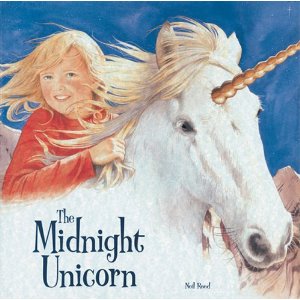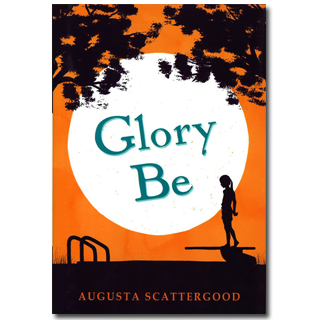I am so proud of the 5th graders at my school! Using Book 3 in Units of Study for Teaching Writing, Grades 3-5 by Lucy Calkins, my students DID grow some BIG IDEAS!!
Here's how my lessons went day-by-day:
1. To immerse the students into reading this genre, I had them read essays, some from the Washington Post, some that other students wrote in years past, and a few that my daughter wrote to get into college.
(Search "essay mentor text" on this blog to find some possible kid-friendly essays). While reading, they needed to figure out the BIG IDEA ("box") and supporting details ("bullets") and I also had them name what KIND of detail was included (story, statistic, quote, observation, list) to get the idea across to the reader.
2. To help students generate ideas, I used Lucy's idea of looking closely at the small parts of our lives. I looked into my wallet that I carry with me always. Looking closely, I saw ALL these cards:
Then I tried to let what I saw spark an idea. In my notebook I wrote:
1. reading books is important (inspired by the library cards and Barnes and Noble teacher card)
2. saving money is important (inspired by the grocery store discount card and the Staples discount card)
3. using mass transit is helpful (inspired by the Amtrak card and Metro card)
3. Another generating idea shared was to think about the issues in our world. Here's an anchor chart of 4th grade issues that hangs in a classroom at PS41 in Greenwich Village:
Once you pick an issue, we jotted down thoughts in our notebook about that issue.
4. My collegued shared one more generating lesson: Think about a subject and your ideas about it. She read-aloud a persuasive writing piece about the importance of zoos and listed all the advantages that zoos provide. Then the students could pick a subject of their choice and jot down ideas about it. Our anchor chart while we were generating ideas looked like this:
5. Then it was time to PICK an idea and write your thesis statement, your claim. Here is the anchor chart we used to help them with this step:
Once an idea was picked, we intoduced the organizing structure of BOXES AND BULLETS.
The BIG IDEA goes in the BOX and the reasons that support this idea are the BULLETS.
We also tried out a few ways to get our BIG IDEA across.
My BIG IDEA became:
PEOPLE LIVE BETTER WHEN THEY READ
Then I brainstormed MANY ways to get this idea across:
Reasons: because FICTION, NONFICTION, ESSAYS help them live better
KINDS: because of NEWSPAPERS, PRINTED BOOKS, E-BOOKS
PLACES: at school, at home, in free time
PLACES: using libraries, using bookstores, using newspapers
PARTS: brain, emotions, physical body
In the end, I chose the REASONS and to help me stay organized, I placed my BIG IDEA on a BLUE paper folded like an hamburger and one reason each on a PINK paper folder like a hot dog.
6. At this point, my collegaue and I checked BIG IDEAS and ensured that each of the 3 bullet points were different ideas related to the BIG IDEA. Once we approved it, students could get their blue and pink paper to come out of their notebooks and start to draft their essay, point by point.
7. Drafting lessons included us modeling how I can write a story to support the bullet idea. I can also gather statistics, a list, or a quote. As I gathered writing to support the point, I placed it in the corresponding pink folder.
8. Once each pink folder had a piece of writing or several pieces of writing, I showed how the bullet point on the front of the pink folder can become the TOPIC SENTENCE and how then I can decide how to include the story, list, quote, or stat that I collected. I literally taped pieces of writing together or used arrows to show what to read first, next, etc. I included a lesson on using words such as FOR EXAMPLE, ANOTHER REASON, ALSO, IN ADDITON to have smooth transition to get the point across.
9. Then I taught lessons on how to START and END an essay, emphasizing certain sentence stems they could use as shared by Lucy.
Ways to Start My Essay
1. Tell a story about one person needing the information in the essay:
My daughter came home from school annoyed that she had to read an assigned book. I tell her, instead, to be grateful for this assignment because reading that book will help her live a better life.
2. Many people think reading books is just a fun thing to do. However, I have come to realize that reading is so much more than just entertainment. I now realize that people live better when they read.
3. Have you ever wondered why schools continue to teach reading, even after kids have learned to read by 3rd grade? I now realize that the skill of reading is so much more than just decoding the words. By reading, people live better.
4. Why must students read for 30 minutes a night as homework, after reading that long or longer in school? Read on to find out why reading is so important.
Ways to End My Essay
1. People live better when they read is true. Because of this novels, travel books, and the Washington Post editorial page will continue to be stacked on my night stand and read! How about you?
2. I realize that when I finish a great work of fiction, I add to my strategy list of how to deal with others. Additional useful knowledge is always gained from reading nonfiction and essays. Because I want to live a great life, novels, travel books, and the editorial page of the Washington Post will continue to be on my nightstand. I recommend you read, too, so you can live a better life!
3. I realize that Thomas Jefferson, who said, “I cannot live without books,” also understood that by being a reader, he lived a better life. I realize that novels, informational texts, and editorials must always be a part of my life. With them, I live a better life. I suggest you do the same!
10. PUBLISHING PARTY!!
All had an essay to share at our Essay Writing Celebration. Some had time to type it up. Others had it hand-written. Some had it in order, in still in their blue and pink paper-folders, and followed their arrows to know what to read next. Before starting to share our writing, we discussed the role of the listener and brainstormed words we might use as we comment on the essays we listen to. Here is our list:
One brave student agreed to read his essay aloud - All people should stop war. Then, as a whole class, we gave comments using the sentence stems listed. Next, we got in triads, spread out through the room and shared our essays aloud and listeners shared comments.
Some of the BIG IDEAS shared included:
People should play soccer safely.
People should have pets.
Bullying is bad.
School supplies should be free in poor countries.
Motorcycles is not the best kind of transportation.
Bolivia is a great county.
6th, 7th, and 8th grades should be in Middle School.
Parents should always pay attention to their children.
Taxes are unfair.
People should not waste paper.
Sea Turtles should be saved.




































